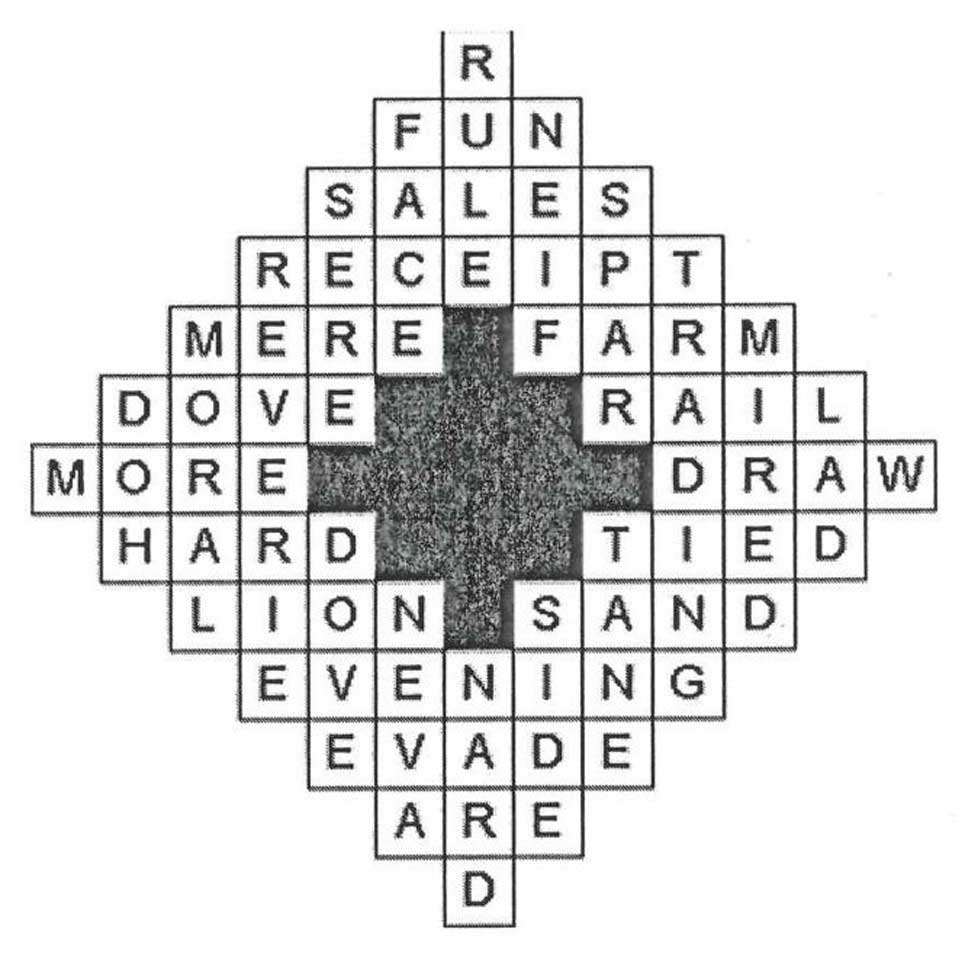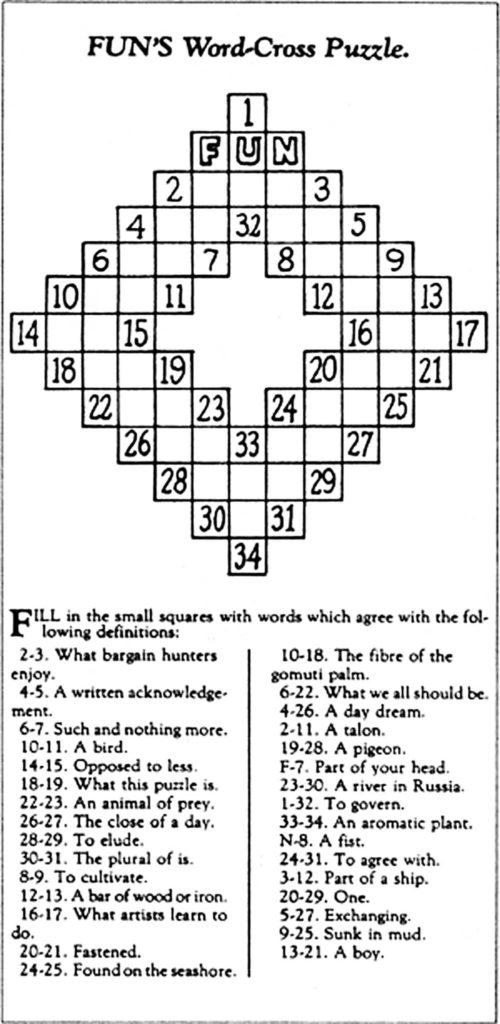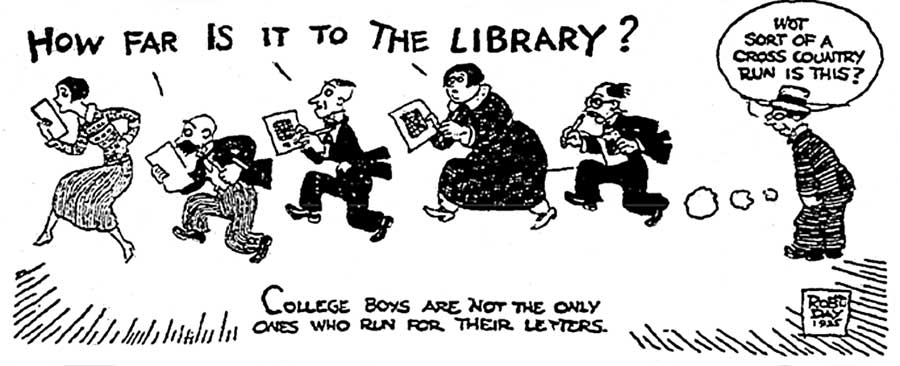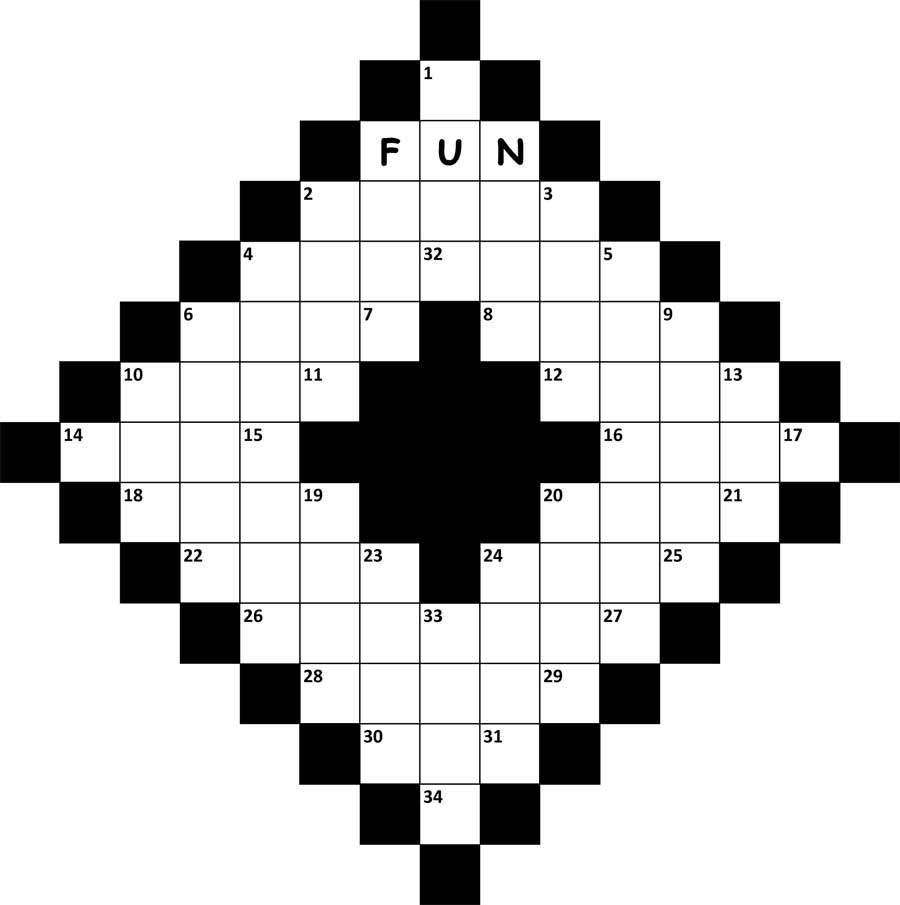Small Home Gazette, Fall 2015
A Puzzle for Christmas
It is a good bet that original bungalow owners were crazy for puzzles.
Arthur Wynne, an English-born New York journalist, had the job of creating puzzles for the “Fun” section of the New York newspaper The World. For the Christmas season, his editor asked him to invent a new word game.
Wynne designed a diamond-shaped grid with clues for words that would read across and down. The World published what was to become the first crossword puzzle on December 21, 1913, as one of the “Fun” section’s mental exercises.
Wynne labeled it “Word-Cross,” though the paper changed it to “Cross-Word” the next month. Readers began complaining if it didn’t run every week, and eventually it was moved to The World’s Sunday Magazine. With the hyphen dropped, the term “crossword” became part of our vocabulary.
Soon the New York Public Library limited borrowers of dictionaries to five minutes each of reading time. The library’s 150 copies could not keep up with the demand from people wanting to use them to look for words.
The newspaper never copyrighted the puzzle, and gradually others began creating and publishing their own. The New York Times was the only American major daily newspaper to refuse to include such puzzles (it had also shunned comic strips).
In 1924, The New York Times editor wrote: “All ages, both sexes, highbrows and lowbrows, at all times and in all places, even in restaurants and in subways, pore over the diagrams.” (Finally in 1931, the paper printed its first crossword. Since then, The New York Times has become “the standard of excellence in American puzzling.”)
The puzzles were so popular in the 1920s that songs were written about them, with such titles as “Cross Word Puzzle Blues”; “Cross Word Mamma You Puzzle Me (But Papa’s Gonna Figure You Out)”; and “Since Ma’s Gone Crazy Over Cross Word Puzzles.”
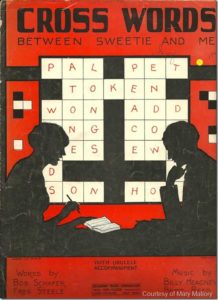 The 1925 song, “Cross-Words Between Sweetie and Me,” with ukulele accompaniment, deals with a man who finds his girlfriend and her family obsessed with crossword puzzles:
The 1925 song, “Cross-Words Between Sweetie and Me,” with ukulele accompaniment, deals with a man who finds his girlfriend and her family obsessed with crossword puzzles:
Cross Words have made me blue as can be,
Brought Cross Words between my Sweetie and me,
She sits puzz ‘ling don’t seem to care,
Whether I’m near her or taking the air,
I’m jealous, how can I win sympathy,
I’m hoping she’ll soon need L-O-V-E,
Kind words are lost words, since she found those
Cross-Words, that came between Sweetie and me.
The 1920s was a decade of fads. Everything from mah jongg*, radio, bridge, golf, solitaire to dance steps exploded into popularity before being replaced by the next big thing.
By 1926, the roaring whoosh of crossword puzzle popularity settled into a steady flame, where it has remained steady through today. Now puzzles can be solved not only in magazines and newspapers but online and on handheld devices.
*A Chinese game played with 136 or 144 rectangular pieces called tiles. The object is to collect winning sets of these tiles.
Can you complete the first crossword puzzle? Fill in the small squares with words which agree with the following definitions. Answers are below.
2-3. What bargain hunters enjoy.
4-5. A written acknowledgment.
6-7. Such and nothing more.
10-11. A bird.
14-15. Opposed to less.
18-19. What this puzzle is.
22-23. An animal of prey.
26-27. The close of a day.
28-29. To elude.
30-31. The plural of is.
8-9. To cultivate.
12-13. A bar of wood or iron.
16-17. What artists learn to do.
20-21. Fastened.
24-25. Found on the seashore.
10-18. The fibre of the gomuti palm.
6-22. What we all should be.
4-26. A day dream.
2-11. A talon.
19-28. A pigeon.
F-7. Part of your head.
23-30. A river in Russia.
1-32. To govern.
33-34. An aromatic plant.
N-8. A fist.
24-31. To agree with.
3-12. Part of a ship.
20-29. One.
5-27. Exchanging.
9-25. To sink in mud.
13-21. A boy.
Below are the answers to the crossword puzzle.